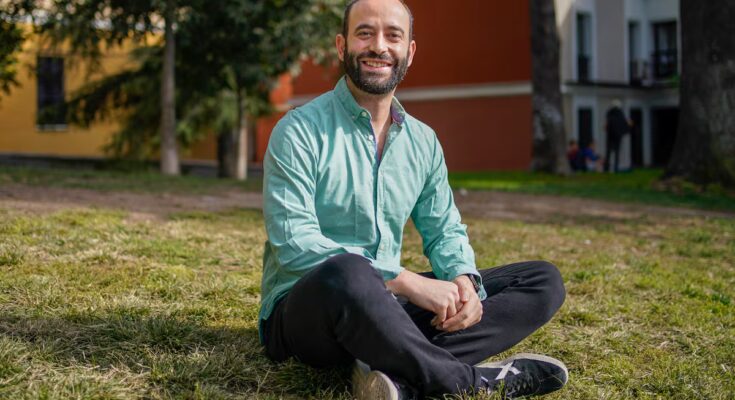His theses function neither as appeals to visceral hedonism nor as strange theories to mask a vice. On the contrary: they combine contrasting studies, first-hand experiences and alternative strategies that are already starting to take hold in institutional settings. Antón Gómez-Escolar, psychopharmacologist and creator of the educational channel Drogopedia (he has 51,000 followers on Instagram alone), believes in the potential of psychedelics to treat mental illnesses. And, although it is still a practice that borders on legality or that talking about these substances is controversial, he has no doubts: “What science shows us is that some drugs, in certain controlled contexts and for certain people, can cure.”
The contexts to which it refers are psychiatric consultations. And those people, those who have problems with anxiety, depression, post-traumatic stress or addictions, among other disorders. The researcher tried it in his time and since then has supported these types of elements: “In my case, orthodoxy didn’t have great effectiveness,” confesses this 37-year-old from Madrid, “I was under treatment with psychologists, psychiatrists, I took antidepressants of all kinds, benzodiazepines… but I didn’t have that good response that some people have. Since I wasn’t getting better, and when I saw that things were becoming chronic, I decided to look for another alternative.”
The alternative, in a controlled space, consisted of two sessions with psychedelics accompanied by psychotherapy. “It was amazing for me. It totally changed the way I understood the world,” he says. Thanks to this achievement and seeing its potential, Gómez-Escolar specialized in this field. He explored the world of hallucinogens, studying their promises and risks. Subsequently he expressed it in its diffusion through networks and in books such as Essential guide to the psychedelic rebirth OR Expand your mindpublished a few months ago by Grijalbo. The researcher is categorical when it comes to defending the scope of these substances, but also when it comes to warning about their possible negative effects: “The only way to avoid any danger is not to consume”, he warns vehemently.
Include in this warning all types of drugs, whether legal, illegal or pharmaceutical. From coffee, the most consumed, to tobacco and alcohol – the most harmful in the long term -, including anxiolytics. Because the word drug is a fickle concept, which ranges from drugs to chemical experiments, avoiding cultural currents or regulatory traps. For Gómez-Escolar, those that could gain greater notoriety in the coming years thanks to their role in mental health are psychedelic substances such as psilocybin, LSD, ketamine or MDMA. “Psychedelics will not be proposed as a first-line treatment, but rather will constitute an option for those people who have not had good success with conventional ones,” insists the expert.
These substances are starting to be offered as “a second, third or fourth option” to those who are unwell after years of failed attempts. “Psychedelics would not be the front line of battle in mental health, but rather the last trench,” he clarifies. Nonetheless, many things should change regarding the legality of these therapies, albeit within the legal framework. “Many of the therapists who work subway They do this with the psychedelic substances that patients bring with them to reduce the legal risks that administering an as yet unlicensed drug to their patients could pose to them,” he explains.
Gómez-Escolar explains the effectiveness of this therapy based on three pillars. The first and most revolutionary is neuroplasticity. “Psychedelics induce neuroplasticity in the brain, increasing the ability of neural networks to reconfigure themselves. If you’re in a therapeutic context, what might have taken many psychotherapy sessions can be accomplished in just a few,” he explains. The second is the alteration of brain activity, which allows subconscious beliefs and other automated cognitive processes to emerge into consciousness that are often the substrate of disorders such as depression. The third is the subjective, “super revealing” experience that the patient experiences and which can show hidden keys to healing.
Compared to conventional psychotropic drugs, which “generally cover the symptom,” are used “daily for a long time” and often keep the patient “like Babia, disconnected from their emotions,” psychedelics do the opposite. “They allow the patient to reconnect with himself and delve deeper into the underlying causes of the disorder in a context in which it is safe, in order to be able to work on it,” he underlines. This process, which can be painful when traumas are brought to light, is why the controlled context is essential: “If done lightly, it could lead to having a difficult experience, retraumatising oneself.” Gómez-Escolar emphasizes that it is not just the drug, but rather “psychedelic-assisted psychotherapy” that produces the lasting therapeutic effect. The substance is an enhancer.
For the communicator, they act as a “catalyst” or “amplifier” of what is in and around the individual. Hence the importance of set and set (i.e. by the mental state and the environment): “The difference between taking 200 micrograms of LSD in a consultation with a professional after a lot of preparation and taking them improvisedly at a music festival in August at 40 degrees”, he illustrates by recalling the sociopolitical situation of the prohibition of these substances. Especially since the Seventies, when they had experienced a certain social boom. His ban was no accident, he claims. Not positive: “It was a shame for scientific research, because it made it disappear.” Those currents linked to substances, the essayist claims, have become excessively politicised. “Now psychedelia is in the laboratory and in the hospital. It’s an eminently scientific movement,” he reflects. This “psychedelic revival” is, in his opinion, much more serious and has the potential to go where the previous one could not.
And Spain can join after being one of the pioneer countries but left behind. “In 2002, the world’s first study using MDMA to treat post-traumatic stress in women victims of sexual violence at the Hospital de la Paz was canceled in Madrid. It was stopped due to political decisions after a scandal surrounding a newspaper article,” she notes. Pitfalls like that cancellation, he says, have pushed us away from the avant-garde. Meanwhile, countries such as Australia, Canada, Germany, Switzerland and the Czech Republic have already authorized these therapies. “The question is: do we want to continue standing in the queue or are we going to start moving it?” – concludes by listing some studies, universities and names that are promoting this field of psychotherapy.
An obstacle may be the image given to the population of these substances. Gómez-Escolar criticizes catastrophic campaigns that put all drugs in the same bag and do not take into account the context of use. “When an extremely catastrophic message is continually given about all drugs, regardless of whether they are used in a hospital or at a festival, many prejudices are generated which slow down research. Furthermore, at the level of recreational use, we experience the dynamics of the story of Peter and the wolf“Those who try these substances realize that this isn’t happening, at least initially, and end up distrusting that message completely, which leads to riskier use and more problems,” he says.
“It’s not about promoting consumption, but rather that whoever decides to do it, knowing the risks, does so in the safest way possible,” he says, without advocating general legalization. On the contrary: Gómez-Escolar believes that the path must be slow and controlled, starting with therapeutic use: “If overnight the use of such powerful, complex and unknown substances in the West were authorized, it is very likely that there will be problems. There were decades ago and there would still be problems.” Their goal is to give society time to absorb and understand these tools through research and education, while prioritizing those who need them most. Thus, this psychedelic revolution will make its way, leaving stigmas behind and far from free slogans. «It will be something serious and scientific, with a great therapeutic path», he underlines.



